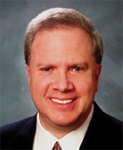Valuable Lessons Learned In Service
By Bill Pollock, chief research officer, The Service Council, www.theservicecouncil.com, wkp@theservicecouncil.com
Real-world advice on how to succeed at service from industry experts.
 The Service Council‘s inaugural Smarter Services Executive Symposium, held in Chicago at the beginning of May, spirited a wealth of debate and discussion. Most of that discussion was centered around how best to move the industry forward — not only in times of economic and geopolitical turmoil — but overall, toward a brighter and more prosperous future. It seemed like almost everyone had a specific take on how to advance the industry, and their viewpoints may be something you can learn from.
The Service Council‘s inaugural Smarter Services Executive Symposium, held in Chicago at the beginning of May, spirited a wealth of debate and discussion. Most of that discussion was centered around how best to move the industry forward — not only in times of economic and geopolitical turmoil — but overall, toward a brighter and more prosperous future. It seemed like almost everyone had a specific take on how to advance the industry, and their viewpoints may be something you can learn from.
For example, Ron Kaufman, noted Singapore-based author, speaker, and customer experience and service culture consultant, opened the conference with his keynote on “Uplifting Services: The Proven Path to Delighting Your Customers, Colleagues, and Everyone Else You Meet,” where he addressed key components of service including the building blocks of an “aligned” service culture, defining service as “creating value for someone else,” building a foundation for service leadership, and the importance of “achieving superior service.” Ron also shared experiences gleaned from consulting leading global services organizations, like Singapore Airlines, to provide real-life examples of how service culture ultimately impacts the success of the organization.
Efficiency Alone In Service Just Won’t Cut It
Stu Reed, senior VP and president of Sears Home Services, a $3+ billion home services organization, spoke on the importance of utilizing an “integrated approach to delivering on the customer promise” and how it has worked for Sears in bolstering customer satisfaction and enhancing the overall customer experience. According to Reed, simply providing the customer with service on the date requested (with no rescheduling), showing up when promised, and fixing the appliance the same day will only ultimately result in 58% customer satisfaction. However, by also showing “respect” for the customer throughout the overall service engagement, the level of satisfaction increases to 95%. Thus, by “maximizing trust in each engagement,” Sears has been able to substantially increase its customer referrals (its single greatest source of new and repeat business).
Brad Smith, VP of customer experience at Yahoo!, had a different take of how service excellence should be defined and delivered. Brad’s experience at Yahoo! is quite a bit different from that of most traditional service organizations, in that Yahoo! supports more than 715 million worldwide subscribers through a variety of online self-help sessions (312 million per year), in addition to the more conventional email, phone, and online chat support vehicles. Brad’s message to attendees was simply to “pick your most painful journey and map it” and that “customers don’t value cases — they value answers.” According to Brad, “It’s about the journey — and the customer life cycle is built through multiple customer journeys.” Brad’s presentation went on to describe how Yahoo! has taken this approach to heart and how customers have benefitted as a result.
Service Providers Must Innovate To Differentiate Themselves
Larry Wash, president of global services at Ingersoll Rand Thermo King and Trane, spoke about the need to be innovative in order to be successful. One of the main premises behind Larry’s presentation on avoiding commoditization was that technology and data are the two primary factors that can create a competitive advantage for the organization — that is, that you need to evolve to “an intelligent services approach” in order to build a sustainable business over the long haul. Also, Larry noted that “service providers need to innovate to differentiate themselves” and that simply competing on the basis of price, quality, value, or features will not provide the market differentiation that will make your organization stand out above the others.
Will McNeill, research analyst at Gartner, provided an overview of Gartner’s take on “service chain transformation” by presenting “The Service Life Cycle Management Maturity Model.” Essentially, Will’s message was focused on “why transform?”, “what are the benefits?”, and “how do we get there?” Will began his presentation by citing a well-known quote from Henry Ford that ties together all of these key points: “A business absolutely devoted to service will have only one worry about profits. They will be embarrassingly large.”
